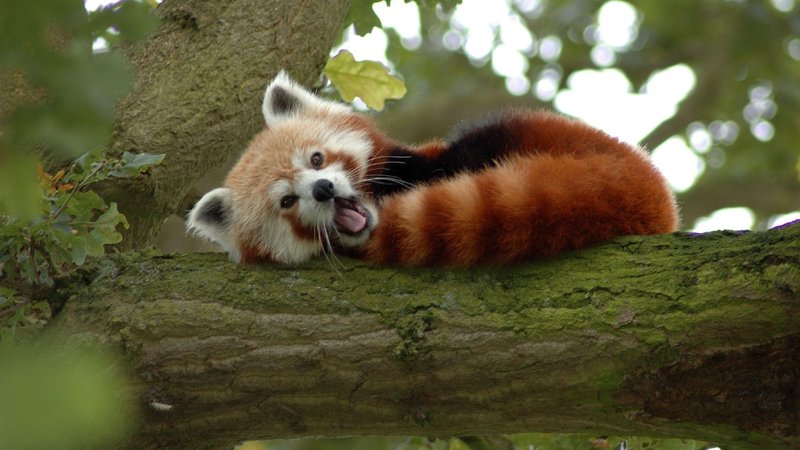
Imagine sitting down with a warm cup of tea and diving into tales that weave through history, art, and traditions. It’s like flipping through an old photo album, where each snapshot tells a unique story, revealing how the red panda has inspired and influenced the way we view nature and ourselves.
From ancient myths to modern conservation efforts, the red panda has become a symbol of curiosity and connection. Let’s explore the different facets of how this charming creature is represented across various cultures and legends.
The Red Panda in Asian Culture
In many Asian cultures, particularly in regions where red pandas live, these animals symbolize harmony and balance. In places like China and Nepal, they are often associated with the natural world and the importance of protecting it.
In Chinese culture, the red panda is not just an animal; it embodies a sense of tranquility. These creatures are sometimes linked to the concept of yin and yang, representing the balance between opposites. The red panda’s gentle disposition aligns perfectly with this philosophy, making it a beloved figure in art and literature. Artists often depict red pandas in serene landscapes, promoting the idea of harmony with nature.
Moreover, in local folklore, the red panda is sometimes seen as a guardian spirit. Stories are told about how these animals protect forests and the creatures that inhabit them. These tales encourage respect for wildlife, emphasizing that every living being plays a role in the ecosystem.
Folklore and Mythology Surrounding the Red Panda
When it comes to folklore, the red panda pops up in various legends that emphasize its playful yet mysterious nature. For instance, in some Tibetan stories, the red panda is believed to bring good luck and positivity. People often tell stories of travelers who, after encountering a red panda, find prosperity or happiness in their journeys.
The character of the red panda is sometimes personified in these myths, portrayed as a trickster or a wise figure who teaches valuable lessons through playful antics. This duality makes the red panda relatable; it shows that wisdom and fun can coexist.
Beyond Tibet, other countries also share similar stories. In Nepal, red pandas are seen as guides for lost souls, helping them find their way home. This symbolism adds a layer of depth to their representation, intertwining nature with spirituality and human experiences.
Red Pandas in Art and Literature
Art and literature have long been influenced by animals, and the red panda is no exception. In modern times, this charming creature has captured the hearts of artists and writers alike. You might find red pandas in children’s books, often depicted as playful and curious characters who embark on adventures, teaching lessons about friendship and courage.
Illustrators love to play up their unique features—their fluffy tails and expressive faces are perfect for engaging young readers. Think about how often you’ve seen illustrations that almost leap off the page, drawing kids and adults alike into the whimsical world of these animals.
Moreover, contemporary art often uses the red panda as a symbol of conservation. Artists create powerful pieces that highlight the challenges red pandas face in the wild, using their art as a call to action for environmental awareness. Through these creative expressions, audiences are reminded of the fragility of nature and the importance of preservation.
Environmental Symbolism of the Red Panda
It’s not just in stories and art; the red panda plays a significant role in modern conservation movements as well. Recognized as an endangered species, they have become icons for wildlife preservation. Organizations around the world use the red panda to raise awareness about habitat destruction and climate change.
This clever little creature represents the delicate balance of its environment; their plight highlights the interconnectedness between species and ecosystems. With their natural charm, red pandas help draw attention to the issues they face, making it easier for people to engage in conversations about conservation.
As advocates, red pandas remind us that our actions have consequences. By caring for red pandas and their habitats, we’re also supporting countless other species that share their ecosystems. It’s a beautiful reminder of how one small creature can inspire big changes.
The Red Panda in Popular Culture
In recent years, red pandas have made their way into pop culture, finding a spot in movies, cartoons, and even video games. They’ve become part of a broader conversation about wildlife and conservation, often introduced to younger audiences in entertaining ways.
Animated films sometimes feature red pandas as lovable sidekicks or adventurous protagonists, encouraging viewers to appreciate these animals. This representation can have a profound impact on how children view nature. When kids see red pandas as fun and adventurous, it sparks their curiosity about wildlife and the world around them.
Social media also plays a significant role in the red panda’s popularity. Cute videos showcasing their playful antics go viral, bringing global attention to their charm and vulnerability. This new media exposure helps to foster a sense of community among animal lovers, uniting people in their shared admiration and concern for these delightful creatures.
The red panda isn’t just a cute animal; it’s a deeply symbolic creature that has woven its way into the fabric of culture and folklore. From representing balance and harmony in ancient myths to serving as a modern-day icon for conservation, the red panda continues to impact how we view our world and the creatures that inhabit it.
As we explore these stories and their meanings, we’re reminded of our responsibility to protect not only the red panda but all wildlife. Whether through art, folklore, or modern media, the red panda inspires curiosity, empathy, and commitment to our planet. Next time you see a red panda, think about all the wonderful stories and lessons wrapped up in that fluffy little body.

